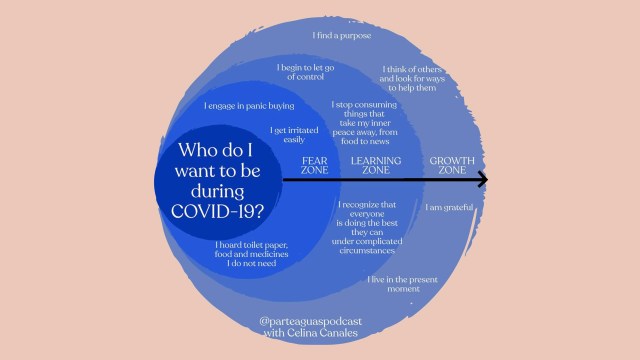How to maximize performance and minimize stress during the COVID-19 pandemic

Image by Ridkous Mykhail on Shutterstock
- Knowing the difference between healthy stress (eustress) and unhealthy stress (distress) can help you maximize your performance during difficult times.
- The Flow Research Collective helps to decode the flow states of your mind so you can live (and work) in the zone, even during a pandemic.
- COO of The Flow Research Collective, Rian Doris, explains how to find your maximum potential and harness the power of your nervous system to work for you instead of against you.
Not all forms of stress are bad for you. In fact, some forms of stress can be positive—healthy, even. Positive stress, called eustress, can drive us to be more productive, healthier, more active, and more engaging in our lives. Negative stress, called distress, is what leads to loss of productivity, declining physical and mental health, and exhaustion.
According to Rian Doris, COO at the Flow Research Collective, “There is absolutely nothing wrong with eustress – in fact, it’s critical for the vast majority of function within our body and nervous systems. It’s what allows us to improve our health, our fitness, our resilience. It’s chronic stress that can have a very systemic negative impact on our health long term.”

Finding your “flow channel” can help you maintain healthy stress and decrease unhealthy stress. Image by Flow Research Collective
Increasing our capacity: What we perceive as stress goes down when we become more capable of coping with stressful situations.
When it comes to increasing our capacity for handling negative stress, there are a few ways we can accomplish this – most of them are what are referred to as “bottom-up approaches.”
A bottom-up approach is like piecing together a puzzle made of our various systems to give a more complex and complete picture . We need to ensure all of our systems are working at optimal levels without being too overwhelmed so they can function better together.
Things you can do to achieve this kind of systemic functionality include:
- Movement – exercising, running, jogging, or going for a walk.
- Breathing exercises that help us practice mindfulness and achieve a calm state of mind.
- Hot and cold therapy or other types of sensation therapy that can get us more in tune with our bodies.
Decreasing the impact: Manage how stress impacts our lives so the negative impact doesn’t overwhelm our systems.
While decreasing the impact of stress is important, it’s certainly not an easy thing to accomplish. After all, if we could simply decrease how negative stress impacts us then it would not be so much of a problem.
Especially in unprecedented times such as when we’re dealing with a pandemic, it’s not as easy to shield our system from the negative impacts of chronic stress.
Cognitive reframing is essentially changing the way you look at something, and as a result, changing your experience of it. This can turn a traumatic event (such as experiencing a pandemic or a major trauma in your life) into something that can be a challenge that is eventually overcome—or it can be as simple as depicting a really bad day as a “bump in the road” in your overall happy life.
Using certain reframing techniques can actually change how your body responds to negative stress. Your body’s stress response is triggered by perceived information around that stress—change the perception, change the response.
The pattern to follow with cognitive reframing is:
- Learn about thinking patterns (explanatory styles).
- Notice your own thoughts as they come.
- Challenge negative thoughts and trace them to their origins.
- Replace the root negative thought with a more positive thought.
Cognitive reframing takes a lot of practice but you can do this as often as you’d like in your daily life and eventually it becomes easier to stop negative thoughts before they become chronic stressors.
Keep in mind the challenge/skill balance when dealing with stress.
According to Doris, a flow exists in the sweet spot between challenge and skill. This flow happens when we undertake challenges or goals in life that are optimally challenging for you to complete – not too easy that it requires no effort and not too difficult that it overwhelms your system.
Keeping this challenge/skill balance in mind for things in our daily lives can help us navigate our stressors, especially during a pandemic such as COVID-19. Anything too easy doesn’t pose as a challenge and doesn’t excite us. However, if the challenge is too difficult, it overwhelms us and becomes a source of unhealthy chronic stress instead of healthy eustress.
“The challenge level for almost everyone has been increased in a systemic way by COVID-19, which means what we should do is decrease the challenge level in our own lives and the things we have control over in order to get us back to that challenge/skill sweet spot.”





